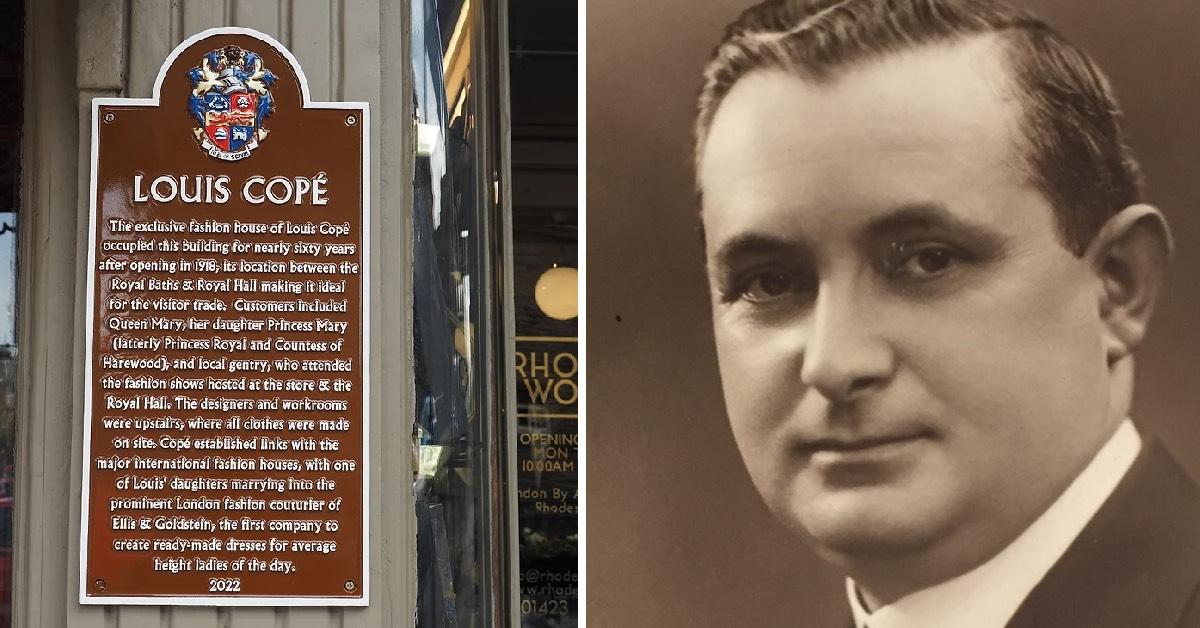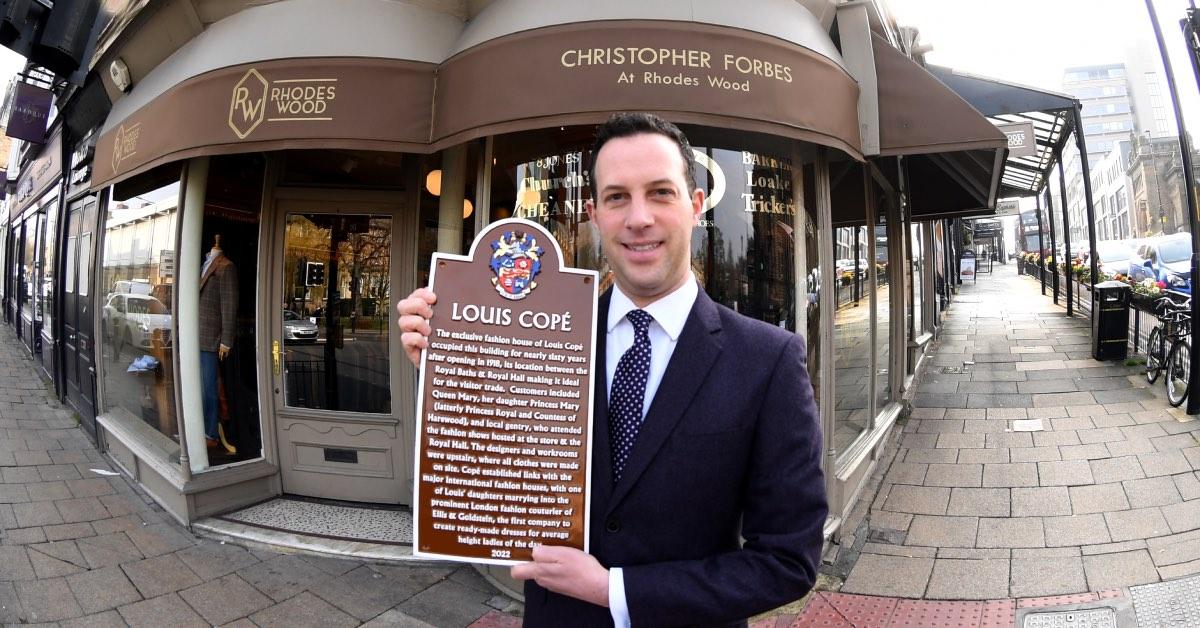Subscribe to trusted local news
In a time of both misinformation and too much information, quality journalism is more crucial than ever. By subscribing, you can help us get the story right.
- Subscription costs less than £1 a week with an annual plan.
Already a subscriber? Log in here.
11
May 2024
Local history spotlight: Louis Copé

(Lead image: Harrogate Civic Society and Alex Goldstein)
London, Milan, New York – and Harrogate?
It might not be mentioned amongst the so-called style capitals of the world, but Harrogate certainly has sartorial credentials of its own. Just a brief wander around the central shopping district offers independent boutiques and designer brands, as well as the usual high street favourites.
However, it’s when looking back into the past that Harrogate’s reputation as a fashion-forward town really comes to the fore. In fact, it was once the home of a famous female fashion emporium, that considered members of the royal family as part of its clientele.
The shop belonged to Louis Copé (pronounced co-pay), a Jewish refugee whose family fled to the UK from Poland to pursue a better life. He was a major player in the fast-paced fashion world of the time, and while his shop closed in the 1970s, his influence in town remains to this day.
Early life
Copé's distinctive moniker wasn't actually his family name or birth name - he was officially christened Ulik Bidenkopf. His birth date is believed to be October 7, 1877.

Parliament Street in the 1900s (Image: Walker-Neesam Archive)
Copé was a later adaption of his surname, transitioning from Bidenkopf to Bidencope and then to Copé – a surname most commonly found in Europe – to sound more 'sophisticated'.
His family first arrived in the UK in the early 20th century, having fled their home in Poland. In that time period, Poland was split between Prussia, the Habsburg monarchy, and Russia, with its Jewish citizens heavily persecuted.
Copé suffered from asthma, and the oppressive industrial smog of London wasn’t helping his health. In 1914, he made the move to Harrogate in search of the purer air that many believed the spa town, and the Yorkshire countryside, could offer.
Clothing Harrogate’s high society
While he may have first worked as a barber when he arrived in the UK – although this is unconfirmed – he made his first career change when arriving in Yorkshire, to become a jeweller. He was always a purveyor of the finer things in life, and in 1918 he opened the store which occupied numbers 52-58 on the corner of Parliament Street, facing the Royal Baths.
Copé’s shop rivalled that iconic building as an architectural talking point; the single pane of glass that wrapped around the main façade must have been an expensive installation, and indicated that customers could expect class when they stepped over the threshold.
The store sold a vast array of luxury couture such as dresses, fur coats, hats, and bags, as well as offering repairs to jewellery and clothing. The clientele was just as prestigious as the attire; the wealthy residents of Harrogate and beyond soon became loyal customers.

A fashion show organised by Louis Copé (Image: Alex Goldstein)
Copé’s reputation quickly grew, and ladies’ maids from across the country were soon contacting his shop to ask his advice on what latest accessory or style their mistress should be wearing.
The mid-1920s was a busy and prosperous time; not only did Copé get married and become a ‘naturalised British citizen’ in 1926, but he even had a brush with royalty. He received a request to dress Queen Mary, whose daughter Princess Mary was Countess of Harewood, the sprawling country estate near Leeds.
Later, the introduction of Freda – his only daughter out of three children – to a William Goldstein, a member of famed fashion house of its day Ellis & Goldstein of London, resulted in a marriage and the union of the two powerful families in society.
Fortune and philanthropy
A good indication of the dizzying heights of success and fortune Copé reached would be the time he came into possession of the ‘Tenant Diamond’, a gemstone valued at around £10,000 – a vast amount for the era.
Despite his lavish lifestyle, he still remained an active member of the Harrogate community and was just as well-known for his philanthropic endeavours. This included supporting several local charities, and throwing fundraising evenings for Harrogate Infirmary.
His legacy
Copé passed away on June 30 1957 at the age of 79. He is buried in Leeds, in the New Farnley Jewish cemetery. His store was taken over by his son Harry and enjoyed many more successful years trading, before eventually being sold in the late 1970s.
Copé’s great-great grandson Alex Goldstein is a property consultant and still calls Harrogate home. In 2022, alongside the late historian Malcom Neesam, he successfully petitioned for a brown plaque to be installed outside of the former premise – now home to Rhodes Menswear.

Alex Goldstein with the brown plaque
Sources for this article include a biographical timeline on the Harrogate Civic Society website, Regional Couture: The Inter-war British Couture Fashion House Isobel (London & Harrogate) Ltd in the academic journal Costume, by Hannah Wroe, Edinburgh University Press, an article on Harrogate Spa Stories website and a profile on Geni.com.
Read more:
- Local history spotlight: Blind Jack of Knaresborough
- Local history spotlight: Dr Laura Veale
- Local history spotlight: Naomi Jacob
- Exploring North Yorkshire’s plaques and the history behind them
0